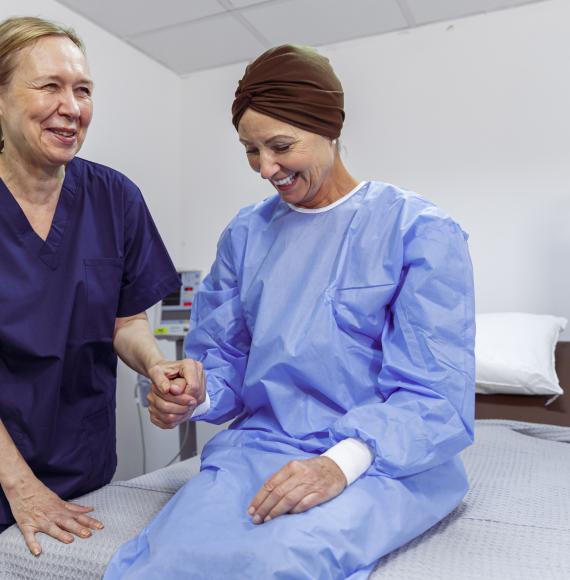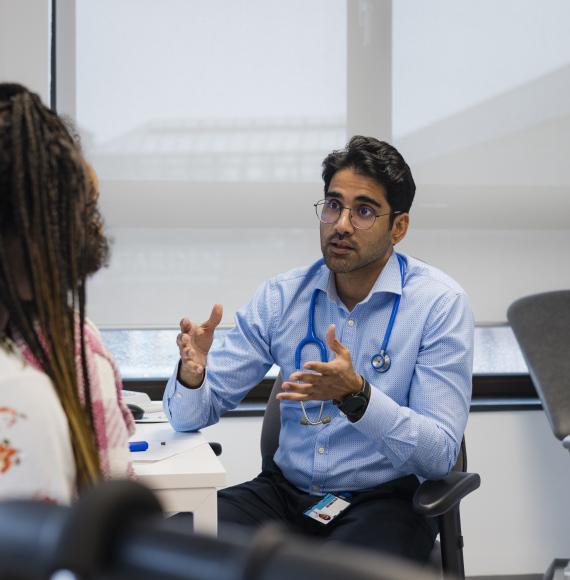Today the Community Network published an infographic setting out the vital role that community health services have played during the pandemic and beyond. Daniel Reynolds and Miriam Deakin explore community providers’ role as we move into the recovery phase.
The public could be forgiven for thinking the Covid-19 pandemic has mainly been played out in hospitals up and down the country. Our hospitals have of course played a vital role in the country’s defence against an unprecedented virus.
But often far from the glare of TV cameras, community services have also been instrumental in keeping people safe and ensuring that the NHS was not overwhelmed during the crisis.
Community services have been caring for people with more complex needs in their own homes and ensuring that medically fit people could be discharged from hospital as quickly and safely as possible, helping free up some of the 30,000 additional beds created in the process. And they have been at the heart of what is proving to be the most successful vaccination programme ever seen.
This is what community providers do and will continue to do, often with little visibility.
The challenges facing community services
With the numbers of Covid-19 patients in hospital falling, and the vaccine programme on track to deliver the first dose to all adults by the end of July, much of the next phase of the pandemic will focus on rehabilitation and recovery. The impact of Long Covid will be long felt and the demands on community services will be much greater as a result.
We know there are going to be significant pinch points in the backlog of care in community services, with some providers saying waiting lists will take months to clear. Demand for mental health support is rising, often connected to people’s experiences during the pandemic.
Community providers have also raised particular concerns about the anticipated rise in demand for children’s services after a substantial fall in referrals during the pandemic.
Wider NHS waiting lists for care have increased to 4.7 million during the pandemic, and almost 400,000 people waiting are now waiting over a year for treatment. This will create increased demand as community teams will need to support more people waiting for hospital care, and more people through rehabilitation and reablement services after receiving that care.
Underpinning these concerns is uncertainty in the planning and delivery of community services and the need for national investment in supporting and developing the workforce in sufficient numbers.
Against a 15 per cent increase in patients in the community compared to last year, community providers are not only managing more care in the community, but also more complex and new care needs.
What do community health services need to meet these challenges?
First, they need increased funding to ensure they can meet new demands for care, including permanent discharge to assess funding which has been key in ensuring people can be discharged from hospital as quickly and safely as possible and must continue beyond the end of September.
It will also be important to explore mechanisms to improve transparency in funding flows to the community sector, to ensure that Long Term Plan funding and clinical commissioning group uplifts reach providers as part of integrated care system allocations.
This is one of the reasons why it is so important for the community sector to have a strong voice on the board of the integrated care system NHS Body (and not just at place level).
Finally, there also needs to be a recruitment and retention drive for community roles to make sure that pre-pandemic workforce shortages are not exacerbated. Although working in the community sector is challenging, it should be an attractive career choice and we need efforts at national and local level to ‘sell’ these roles more effectively.
Building on the innovation of the last year
In return, community providers will continue to innovate and build on the new ways of delivering services that have been a feature of the pandemic. The digital transformation in the sector over the past year has been remarkable, with many consultation services moving online, where appropriate.
Alongside this, the pandemic has been a catalyst for collaborative working across the health and care system, with community teams providing essential support to care homes and other partners.
Community providers will also be consistently delivering new urgent community response standards from 2022 and improving the quality of data that will help improve the consistency of provision across the country.
While you may not hear about it on the news or read much about it in the national media, community providers will continue to be at the heart of the recovery phase of the pandemic. Quietly doing what they have always done for their patients and communities as the glue that holds the NHS together.
The Community Network, hosted by the NHS Confederation and NHS Providers, is the national voice for NHS community providers. Miriam Deakin is Director of Policy and Strategy at NHS Providers. Daniel Reynolds is Director of Communications at the NHS Confederation.



















